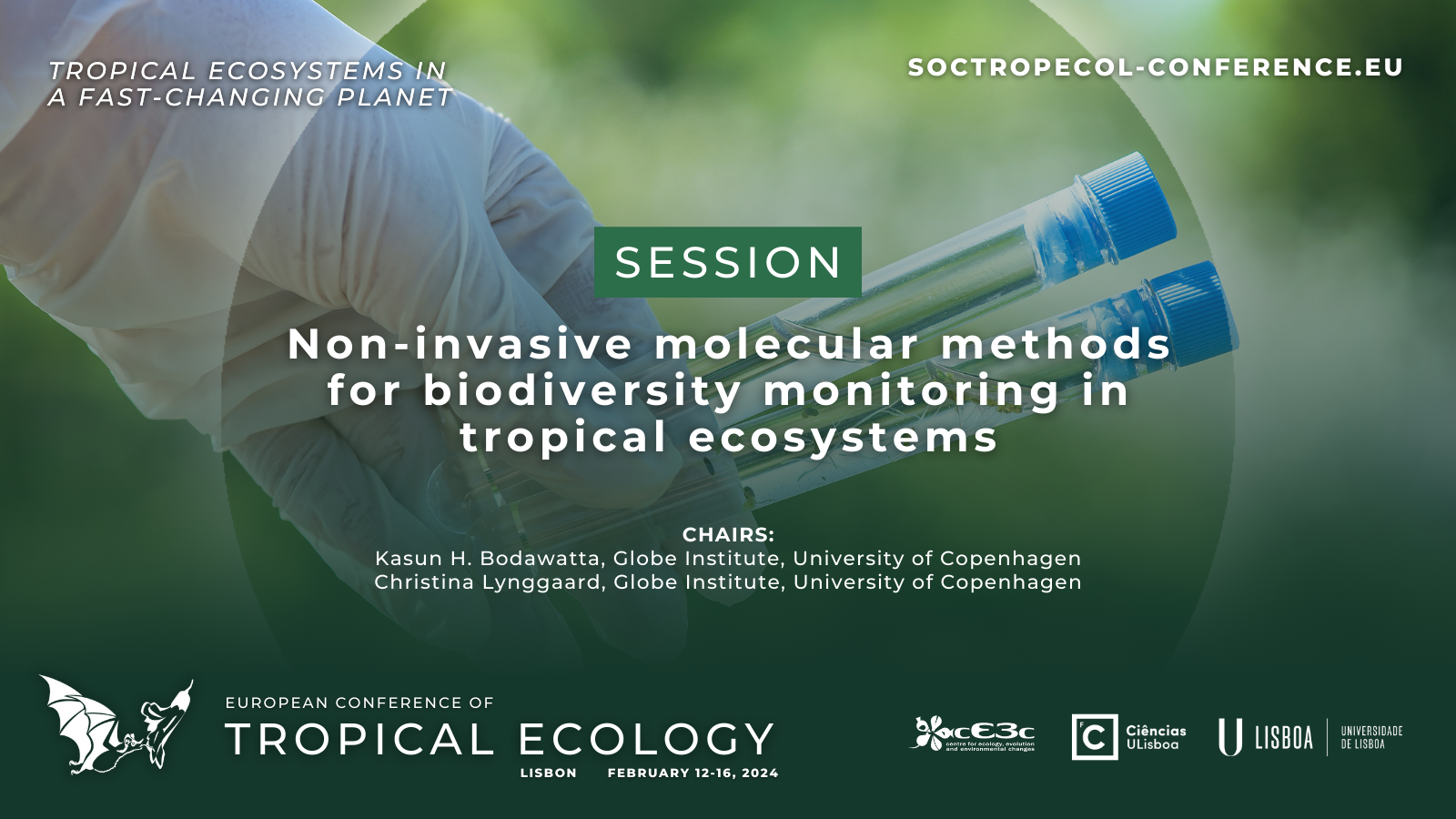[
Close window ]
Non-invasive molecular methods for biodiversity monitoring in tropical ecosystems
Short title: Tropical biomonitoring in a molecular era
Chairs: Kasun H. Bodawatta, Christina Lynggaard
Contact: bodawatta@sund.ku.dk
Effective and efficient biomonitoring tools are critical to evaluate biodiversity and ecosystem health. The rapid growth in non-invasive molecular methods, such as targeting DNA left by organisms in the environment known as environmental DNA (eDNA), has enabled us to detect organisms across the tree of life. These methods were initially developed targeting aquatic ecosystems, but they are currently also used in terrestrial ecosystems through targeting DNA in soil, carrion and hematophagous invertebrates, and faeces. Recently, new sources of DNA have been showcased, such as air, flowers and even spider webs, enlarging the tools available for biomonitoring. These methods can not only detect biodiversity in an area, but also provide valuable information on co-occurrence patterns, trophic interactions, and symbiotic associations. The value of these techniques are imperative in tropical environments, where it is difficult to monitor the extremely high biodiversity with traditional monitoring approaches. In this symposium we aim to showcase a diversity of non-invasive molecular approaches and the current state of the art methods in the field to characterise and monitor biodiversity in tropical ecosystems.
Download the picture corresponding to your session for posting on social media.

